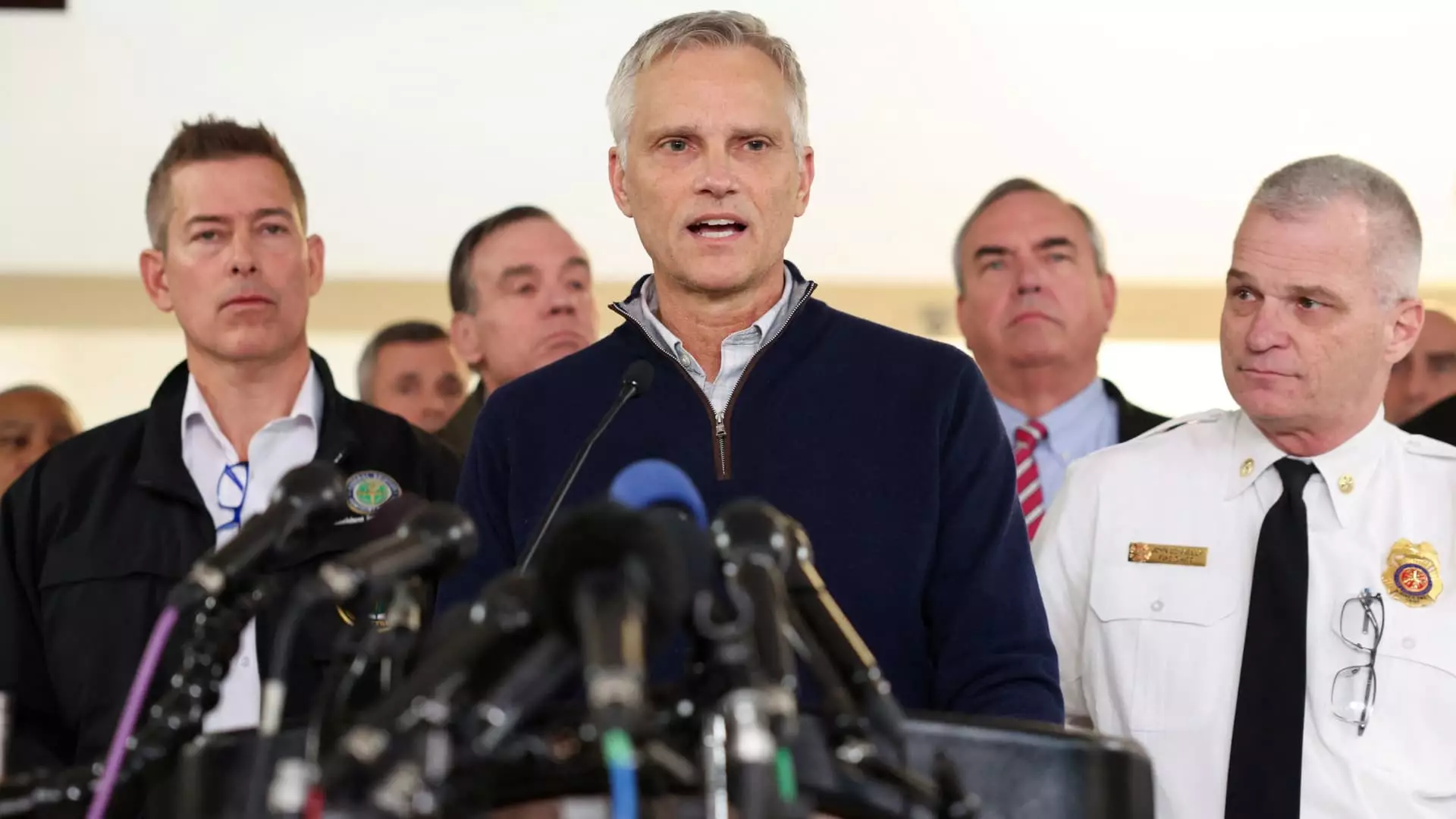On a tragic evening in Washington, D.C., the skies witnessed a catastrophic event when American Eagle Flight 5342 collided with a military Black Hawk helicopter near Reagan National Airport. With the accident occurring at approximately 9 p.m. on Wednesday, the grim reality of aviation safety came to light—a collision that has raised numerous questions regarding the circumstances that led to this unforeseen disaster. As details emerged, American Airlines CEO Robert Isom confirmed that the regional jet was operating on a standard flight path, offering little solace to those affected by the calamity.
In his press conference, Isom emphasized the unexpected nature of the collision, categorically stating that such events are not considered standard practice in aviation. Transportation Secretary Sean Duffy echoed this sentiment, highlighting that prior to the disaster, both military and commercial flight paths did not reflect any unusual patterns for the busy airspace over Washington, D.C. The revelation that a military aircraft could intersect the trajectory of a civilian flight poses critical questions regarding air traffic management and communication protocols within one of the country’s busiest airspaces.
Isom’s expressions of sorrow were palpable, reflecting the profound impact the incident has had on all those involved. With a grim acknowledgment of the potential loss of life, he mentioned the activation of a care team dedicated to supporting families and recovering from this heartbreaking event. The company’s initiatives, including a designated helpline for loved ones, highlight the pressing need for transparency and support in the aftermath of tragedies.
Casualties and Background
Reports indicate that 64 individuals were aboard the ill-fated flight—60 passengers and four crew members, including notable figures such as elite figure skaters returning from a training camp. This detail adds a layer of complexity to the tragedy, intertwining personal stories of ambition and dedication with devastating loss. U.S. Figure Skating released a statement acknowledging the emotional toll on not only the sport’s community but also the extended families closely affected by the tragedy.
The collision also raises concerns regarding emergency protocols and the adequacy of current safety measures in place to prevent such incidents. Isom did commit to collaborating with various authorities, including local and federal agencies, as well as the National Transportation Safety Board, to initiate a thorough investigation. These efforts will be critical in determining how a collision of this magnitude could occur amid stringent regulations governing U.S. airspace.
As the investigation unfolds, unanswered questions loom. Many are left wondering how communication failures may have contributed to the mishap. The aviation industry must remain vigilant and responsive to these tragic occurrences, ensuring the lessons learned lead to improved safety measures and protocols to safeguard against future disasters.
The collision of American Eagle Flight 5342 with a Black Hawk helicopter stands as a stark reminder of the inherent risks associated with aviation. While discussions will undoubtedly evolve around regulatory measures and safety improvements, the focus must also remain on the victims and their families, ensuring that support systems are robust enough to help them navigate the painful aftermath of this tragedy.

